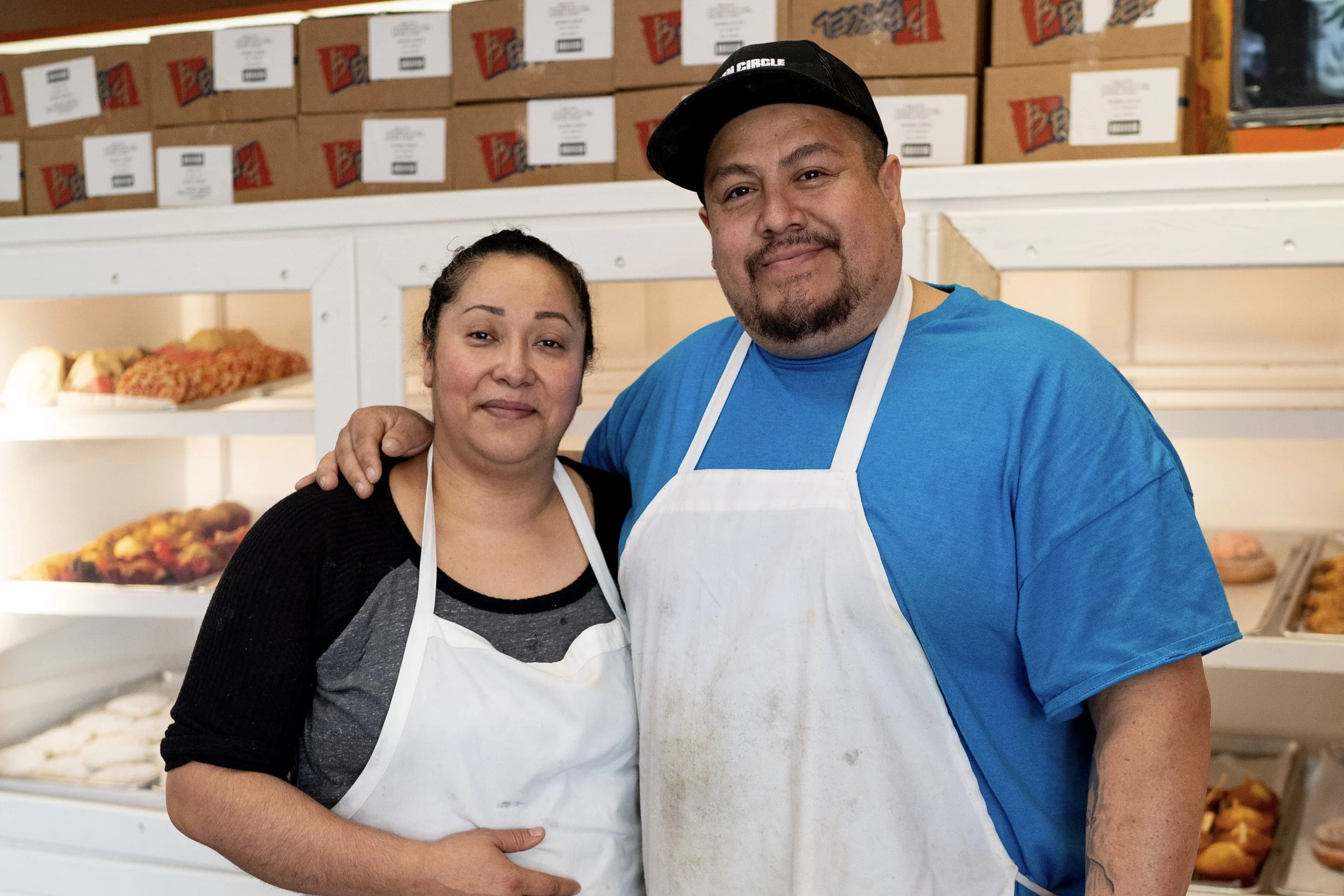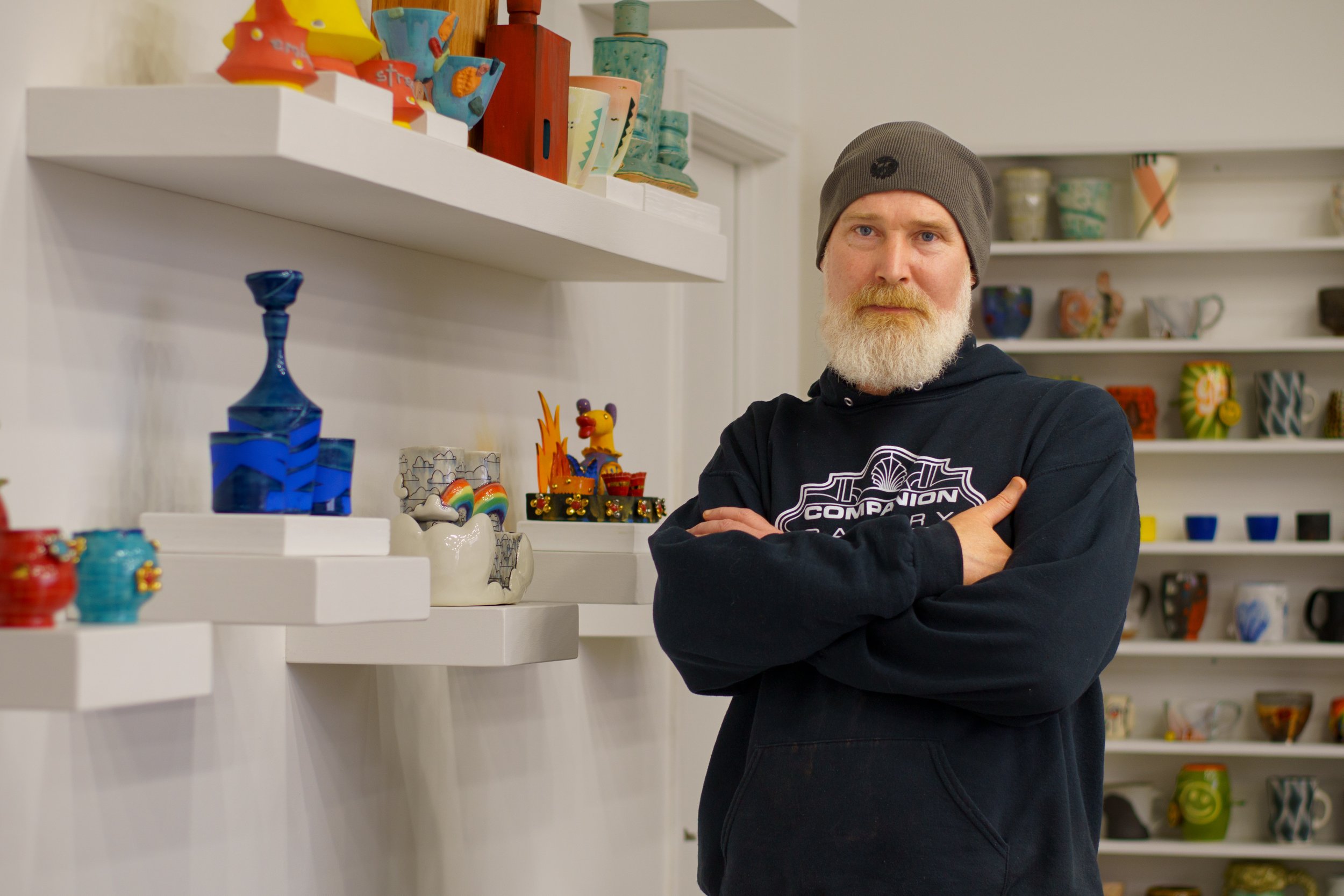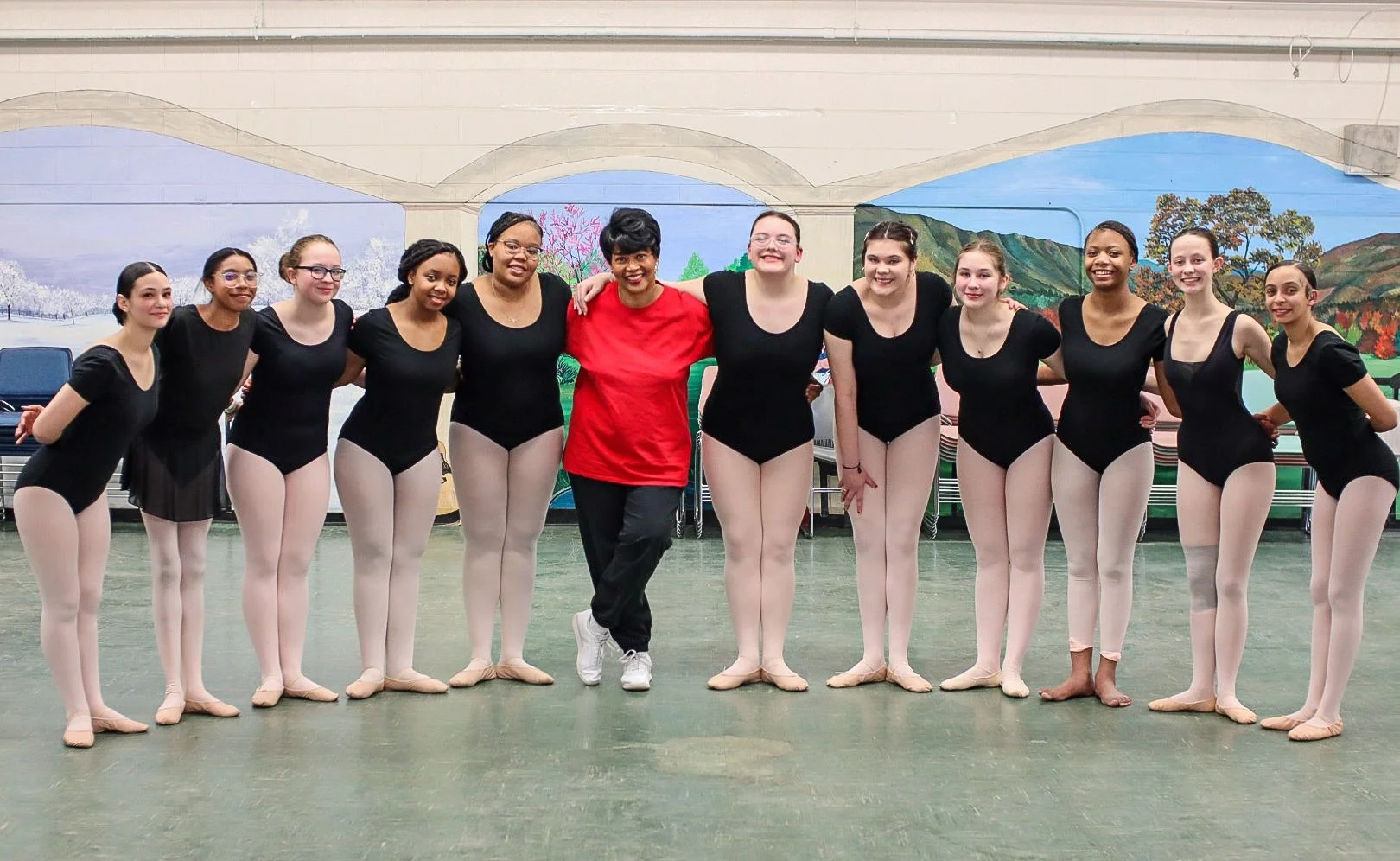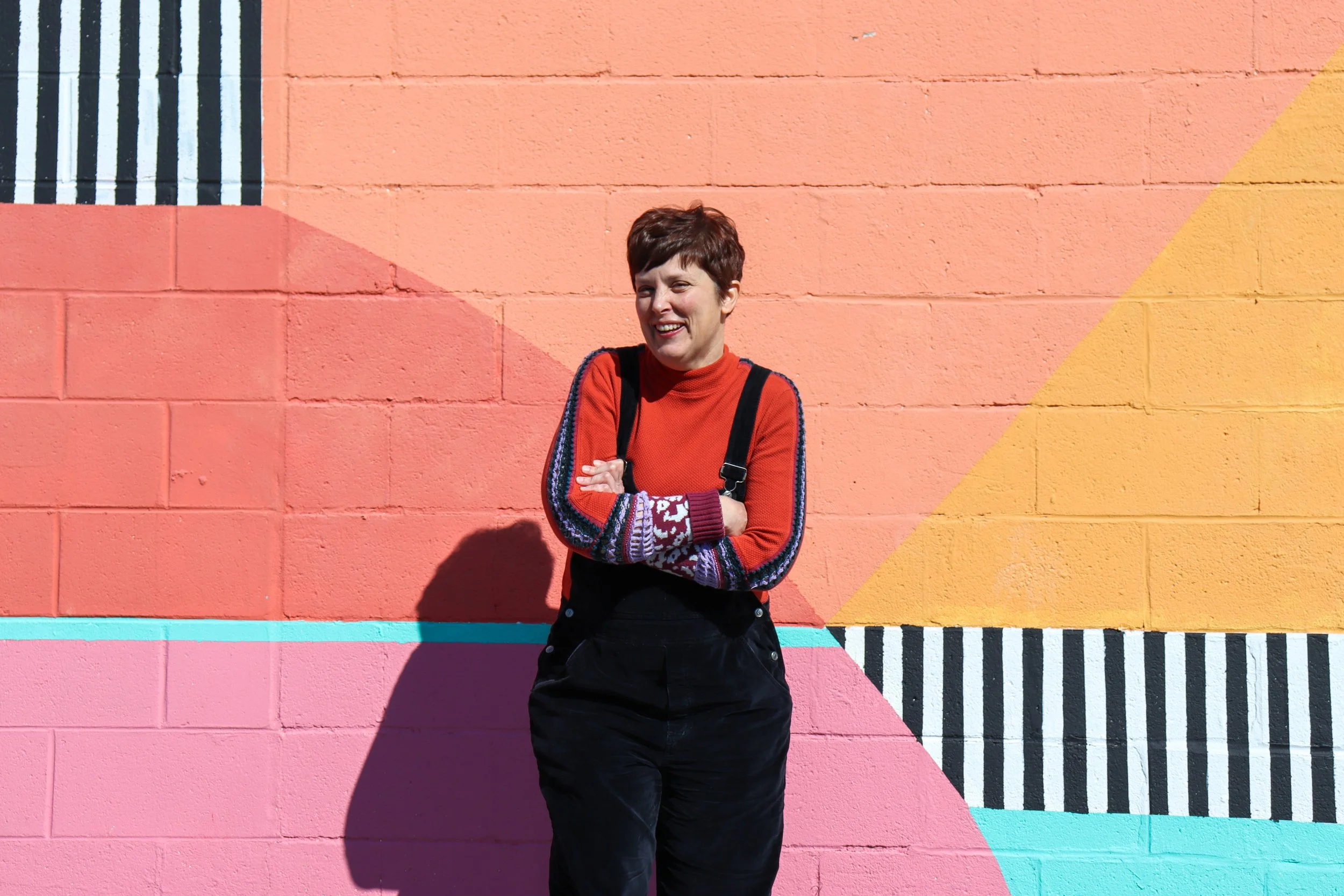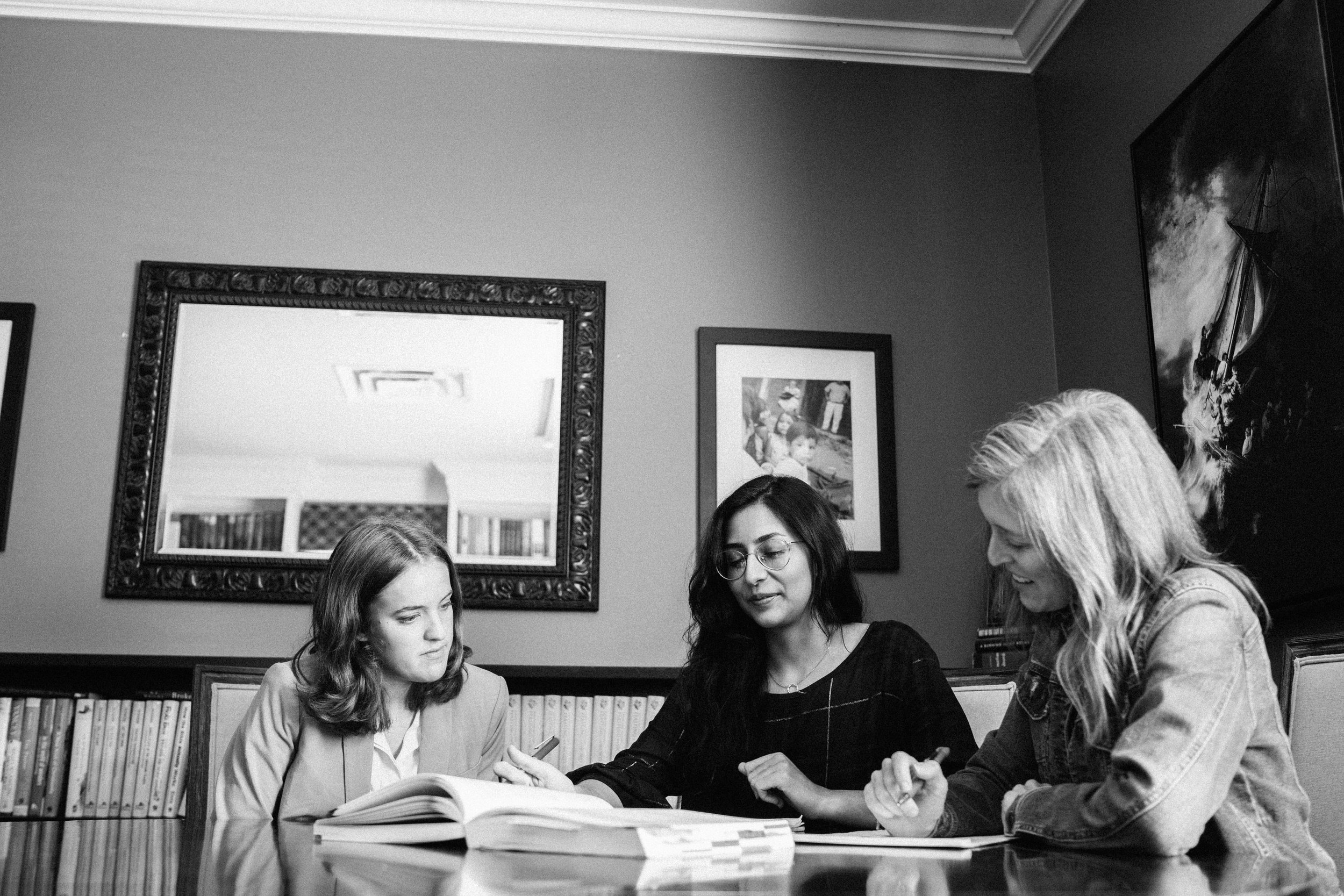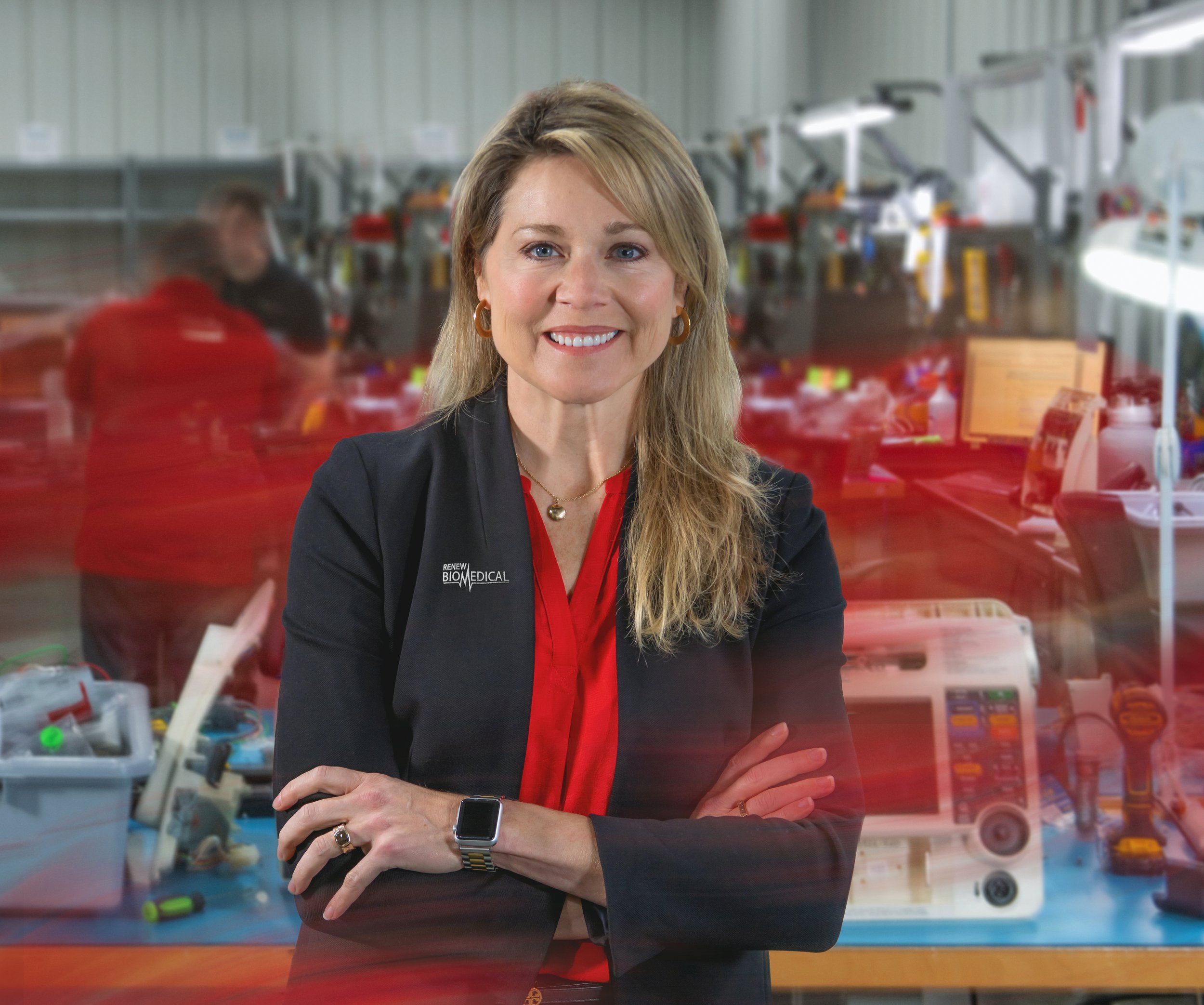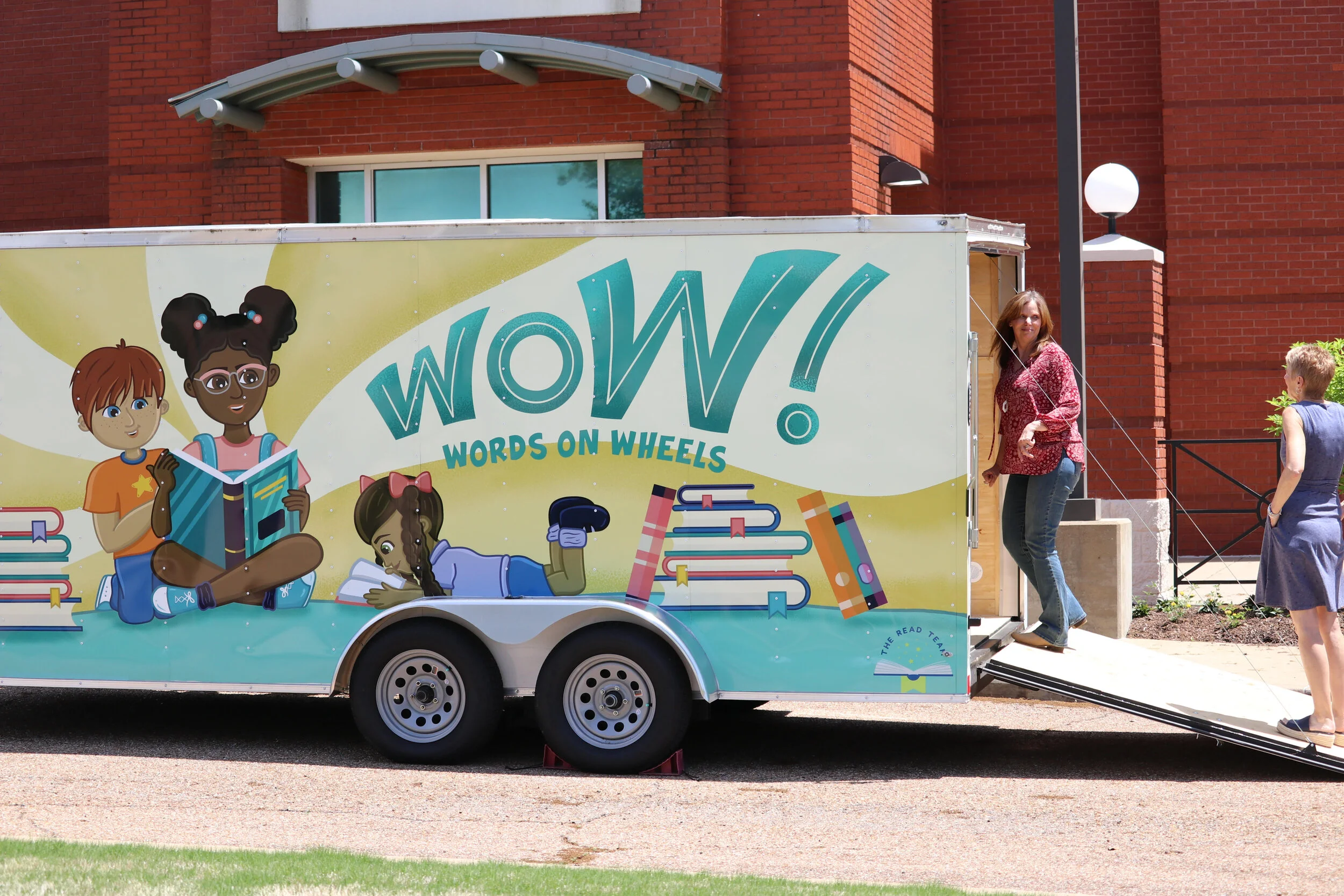Proudly Made In America
This piece was originally published in the Fall 2016 issue of Our Jackson Home: The Magazine.
As I pulled up to Alamo Pride Cut & Sew Factory in March of 2014, I had to focus on the bold colors associated with spring that had taken hold across the Mid-South. The air was clean, and the morning dew blanketed fresh azalea and dogwood blossoms. I needed to focus on the beauty around me to keep from crying and mourning the life in Hong Kong I had left behind. “This is what the South is,” I said to myself as we drove past farmlands and well-manicured lawns heading into town. Hours earlier my plane arrived in Memphis from Kalispell, Montana, where there was still snow and I was cross-country skiing just the day before. Now I was in West Tennessee, and the excitement of spring and new beginnings was all around us. A few months earlier, my husband Preston and I had purchased a sewing factory that shut its doors in late 2013 after forty-four years. Preston relocated to the area with other essential personnel earlier in the year, and after three months of work they were finally ready for the grand opening. In a way, it was my grand introduction to life as a Tennessean as well.
As an interior designer, I was given the job of helping decorate the facility in less than a week before the ribbon cutting ceremony and grand opening. Preston told me just as we were pulling up to the plant that I was walking into a time capsule from 1990 and that I needed to usher in 2014 in five days. That may have been the understatement of the year! We filled up five large dumpster bins and donated obsolete printers and computers that were made when Reagan was in office. I remember thinking to myself, “This is about the time that everyone started buying products from overseas.” A fresh coat of paint and a deep cleaning that would have made Martha Stewart proud was essential. A coffeemaker ran nonstop, but somehow we got it all done. I chose to go with a strong sense of early Industrial Americana and felt more pride with every hint of red, white, and blue integrated into the office furniture, window treatments, and decor. The grand opening went off without a hitch, and by Friday, Alamo Pride Cut & Sew Factory was introduced to the community. This spring was a time for new business to be born, too.
To me, the excitement of a startup business and the beautiful colors of the new season were a welcomed distraction from leaving my family and friends behind. I had just relocated back to the States from Hong Kong nine months prior and relished being near them again after twelve long years away. My husband, too, was in a new place. He and his staff had moved to West Tennessee from North Carolina, and the adjustment was new for all of us. Not only was being in a new town something we were all getting used to, but somehow we were going to prove that it was still possible to make quality goods in the United States. The stakes were high. Preston had contracts, and I had contacts with larger companies (who had moved their production overseas years ago) that we were moving from China to Alamo. And when banks told us that they wouldn’t finance such a venture, we took it in stride and financed it ourselves—talk about taking a gamble. We were living in our own episode of Shark Tank meets Real World.
Coincidentally, of all of the skyscrapers that compose Hong Kong’s magnificent skyline, Preston and I, by chance, worked in the same building in Tsim Tsa Choi in 2003. But as fate would have it, we wouldn’t meet for another two years. I often wonder how many times we passed one another in an elevator without knowing it. He was working as product developer for Rawlings Baseball, and I was the general manager of an Asia buying office for the American import company Heritage Mint Ltd., which is still operating, was founded by my grandfather and is celebrating its fortieth anniversary this year. My grandfather put me on a plane to China at the age of twenty-three and told me to “Go lose yourself and find yourself again.” That was precisely what happened. I was responsible for developing products for twenty-eight different trade marked brands held under Heritage Mint Ltd. for the next six years.
The first factory I visited was a men’s electric razor factory. I had never seen the inside of an electric razor, but watching these men and women put one together made me realize the microscopic components and the precise, nearly saint-like patience and attention to detail that it took to put one together. Seeing them hunched over, using tweezers to place springs the size of a needle tip into little holes made me hold my breath, afraid I might cause them to mess up that meticulous task. Seeing the dormitories they lived in and knowing that they worked from 9 a.m. to sometimes 11 p.m. putting these razors together to be sold for $9.99 to $19.99 wrenched my heart. They had journeyed across China by train and would only see their families once a year during Chinese New Year. Thinking about them leaving their lives and families in the beautiful countryside to make money in a smog-filled city brought me to tears. I had to excuse myself to visit the restroom where I pulled myself back together to return for the remainder of my tour with a smile taped on my face. When something is purchased for $9.99 in the United States, it is considered a part of the “disposable” market. I don’t know many people who are going to have the first clue for how to pull out a microscope and put one of these bad boys back together should one break. Most major retailers in nearly every city dotted across America offers a quick solution to simply buy a new one and replace it.
My grandfather was right. I felt lost. I felt that if everyone I knew was walking through this factory with me, they would take much better care of what they had. At the end of our tour, I was led to a long conference table where the factory manager lit a cigarette in a room already filled with smoke so thick you couldn’t see through the air. I couldn’t tell if it was from the pollution outside being produced by a hundred or so surrounding factories or the number of cigarettes in the ash tray. I joked to myself that the filters on his cigarettes could arguably be filtering him from the air the rest of us were breathing. I remember seeing pictures of the air quality during America’s Industrial Revolution and quickly realized that we hadn’t fixed the problem by monitoring American factories but that American companies had simply outsourced our poor air quality along with many other leading countries in the world. All of these workers were paying the price of being worlds away from their loved ones, and the environment was taking the toll.
Another lesson came when I worked on a project for a major U.S. drug chain spring and summer seasonal buyer for over a month to develop a collection of birdhouses. I was told that if I provided them with ten styles of birdhouses with a target retail of $9.99, they “could sell them all day long.” This meant that if I made their birdhouses at a cost of $2.20, I could land the product in the United States at their target retail price of $9.99 and get the order. I booked my flight to Jinan, China, to visit a birdhouse factory.
On my flight, I studied the designs that sold the previous year and found them so hideous it was comical. One birdhouse was a house that read “Salon” on the front porch. There was a frog sitting in a chair wearing smudged red lipstick. A small sign read “5C” (which I could only guess was supposed be five cents) and “Wash and Blow.” It looked like a stilted house on a bayou over a swamp. I guess this is where frogs get their hair washed? I could not make any sense of this design. I am a interior and product designer, but I’m sure that my five-year-old niece could have done a better job in her craft class given the chance to make one of these. I was baffled that this was a “proven winner.” “I have this one in the bag,” I thought to myself.
I landed in Jinan to find the blackest of black air I had ever seen in all of my years in China. I had almost become used to the poor air quality, but this time it was worse. I arrived at my hotel room and could literally see the smog and filth in the air between the TV and my bed. I slept with a scarf around my face thinking that it might filter some of the pollution out even though I know it only made me feel better. I was always shocked at the black film I washed off of my face at night and the bad taste from the air that lingered in my mouth for two days after leaving China. But the real shock came when I returned to Hong Kong to follow up with my customers on the ten bird houses I had designed.
The division buyer came back to me and told me, “Oh yeah, you hit our target price, but we can’t run those.” I was baffled. “The original samples of the product we sold last year were cardboard treated to look like wood,” he explained. “You made your birdhouses out of real wood. We need our customers to buy the birdhouses every year, so we’re going to stick to the same supplier. Yours would last too long.”
As anyone would do after not landing a deal, I thought about what I could have possibly done differently to obtain this big box order. Under no circumstances would I have thought to make my birdhouses out of cardboard. I told the buyer that my family business had provided quality products to our customers for forty-five years, and we weren’t going to stop now. I happily opted out of re-quoting the deal. When I turned on the TV and heard constant chatter about the U.S. deficit and the credit crisis, it made me sick to think that Americans were going to go spend their hard-earned money on a birdhouse that would deteriorate that season. The moral of the story: If you can’t make it, buy it as locally as possible. Wood from your native trees is meant to withstand the climate in which you live. Nature provides what we need right where we are. We don’t need cardboard hanging in our trees.
“With every purchase we make, we are casting a vote for the kind of world we want to live in. With everything we replace, we create more waste. With every item we purchase from overseas, our money goes with it.”
Needless to say, over time, Preston and I recounted experience after experience like this with one another over dinner on my rooftop in Hong Kong. We found a compelling desire to make a change and give back. We not only became frustrated with the cheap quality and throwaway nature of goods produced in Asia but also the environmental resources and packaging required to get a product from China to America. Oftentimes, eight or nine pieces of garbage—including cardboard, acetate bags, clam shell packaging, styrofoam, inner and outer cartons—are thrown away before a product hits the shelves in their packaging. Consumers don’t see the packaging to protect packaging. Consumerism and waste has gotten out of control.
When Preston heard about the chance to buy an old sewing factory and bring it back to life, I was excited and worried at the same time. Before we knew it, we both dove headfirst into breathing life into a dream of creating a place where goods could be made in the U.S. once again. Pursuing this dream meant that employees could live at home and be close to their families instead of in factory dormitories. It would have a dramatic environmental impact and would help to fuel the U.S. economy.
I looked over at my husband’s sparkling blue eyes as we rounded the corner and couldn’t help but think about how proud of him I was. He was done talking about the weakening economy, about jobs going overseas, and about poor quality coming out of China. He had put his money where his mouth was, and I was here with him to help support his dream. I knew that what we had seen, done, and experienced in our combined eighteen years overseas was our precise reason for being here.
That first year, we made countless trips to see buyers asking what kind of products we could quote for them and to let folks know about our new factory. There were design centers to visit in San Francisco, designers to meet with in New York City, and retailers to court in Texas. Everyone heard the same story: American-made can be done at a fair price and with exceptional quality. At the same time, my husband’s outdoors brand Yukon Outfitters was expanding its product line to include American-made hammocks, bags, and tree straps. Slowly, our production line began to grow and add machines. The first hammock to roll off the line was sold to a customer in Ohio. Did they have any idea about the lives that their purchase affected? We sure hoped so and prayed that they would tell their friends about it, too!
Before long, customers started to seek us out and make the trip from Chicago, Denver, and Baltimore to Alamo, Tennessee, to inquire about how they could get their products made at our factory. I could see the pride in the workers as they saw the buyers and developers walk through their factory. One day one of our sewers came up to me and gave me a huge hug. With tears in her eyes, she thanked me and my husband for coming to Alamo and bringing in orders again. She said that this time last year she didn’t think she’d ever find another job because she had only ever worked in a sewing factory. I hugged her back and told her that she was the one we needed to thank because without our staff none of this would be possible.
Today, nearly two-and-a-half years later, Alamo Pride has twenty-two employees and makes product for sixteen different brands. Two of those brands are Fortune 500 companies and distribute worldwide. I like to think that my own line of Alexandra Lauren linen draperies made in Alamo might be in a shop or store in Tokyo or Hong Kong. Back home, here in Tennessee and in every state, it’s important to remember the power of our purchases. With every purchase we make, we are casting a vote for the kind of world we want to live in. With everything we replace, we create more waste. With every item we purchase from overseas, our money goes with it. Outsourcing is a fancy word for “you’re fired.” When a factory in America closes, it’s not just everyone in the factory who loses his or her job; everyone in the community is affected. Businesses that supply parts and raw materials, that transport those materials and finished goods, companies that provide maintenance, their phone company, and their insurance agent—all of those individuals who have lost their jobs cut back on their spending, creating a ripple effect that goes on and on. The great recession touched all of us or at least someone we know. The great thing is, there is something we can do about it. Today, more and more products are being made in the United States again.
Preston chose the name Alamo Pride for our factory. We wanted to create a company that Tennesseans would be proud to work at, to take pride in making quality goods that will not need to be replaced after a year. I take pride knowing that when our team of wonderful artisans leaves our factory, they are going home to their families. There are towns like Alamo all across the country that benefit from these purchase decisions. If every American spent just $3.30 a year on American-made products, we would create an additional 10,000 jobs. If every American dedicated 5% of their annual discretionary spending on Made in America, an additional one million jobs would be created. You, too, can reverse the flow of jobs right now by purchasing products made in America. You, too, can help by checking the label and seeing where your next handbag, tool, or jacket was made. It might or might not be more expensive, but none of us can afford to pay the price of not supporting American-made. I hope that my humble perspective encourages you the next time you pull out your wallet to remember that you are casting a vote for the kind of city, state, country, and world you want to live in. We choose to support our new Jackson home.
Alexandra Powell recently relocated her Hong Kong- and Phoenix-based interior design and event styling studio (Alexandra Lauren Interiors) to Jackson, Tennessee. She is the recent recipient of the Best of Houzz 2016 Award for both design and customer service. Alexandra and her husband Preston relocated to Jackson in 2014 in order to open a cut and sew facility to manufacture her American-made line of ready-made drapery panels, linen shower curtains, and throw cushions, as well as products for Preston's business, Yukon Outfitters.
Photography by Katie Howerton and Veronica Schreibeis.









